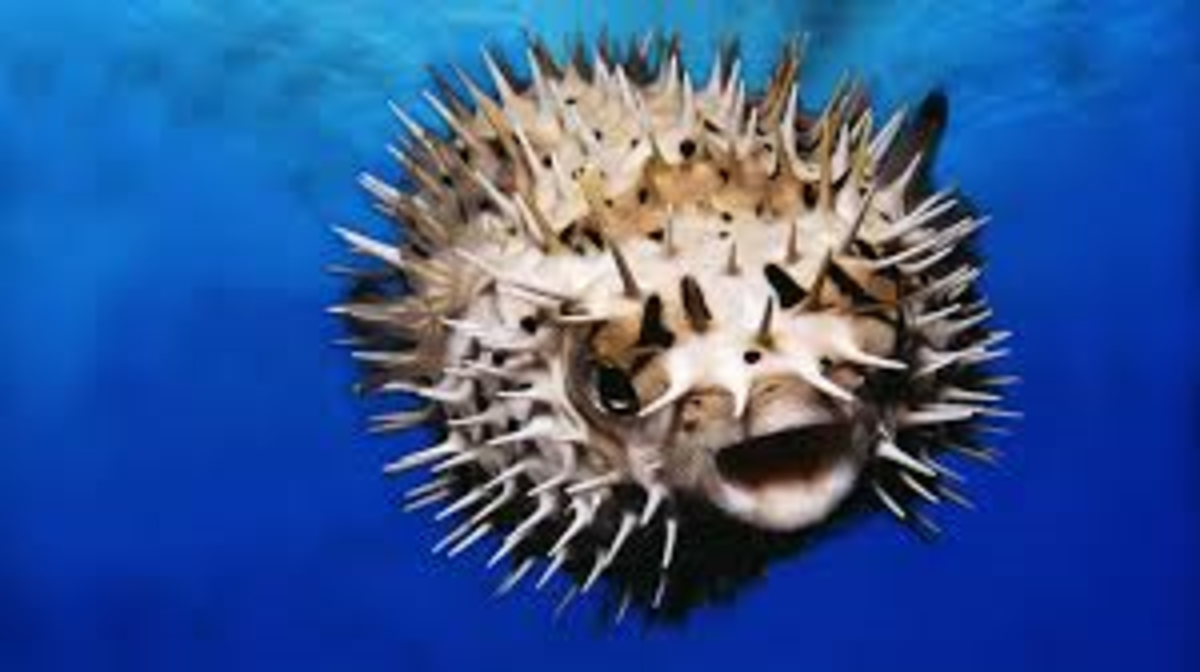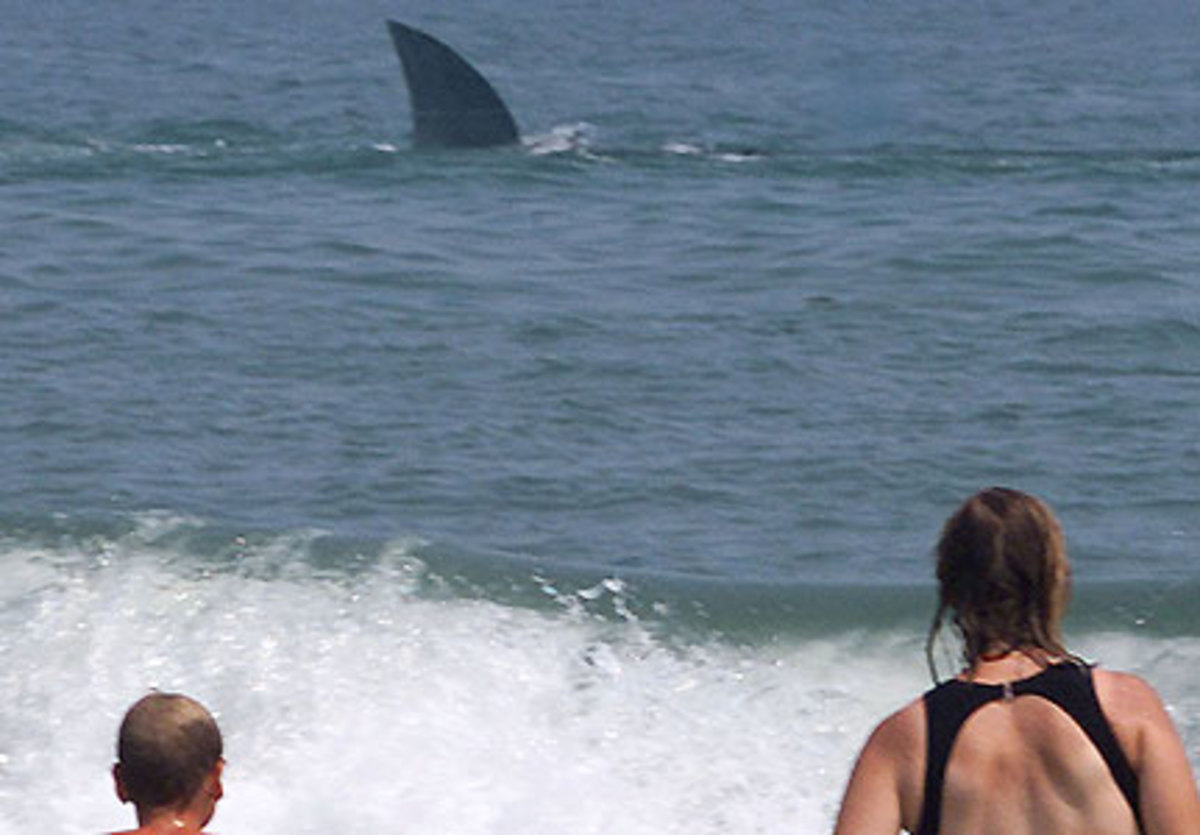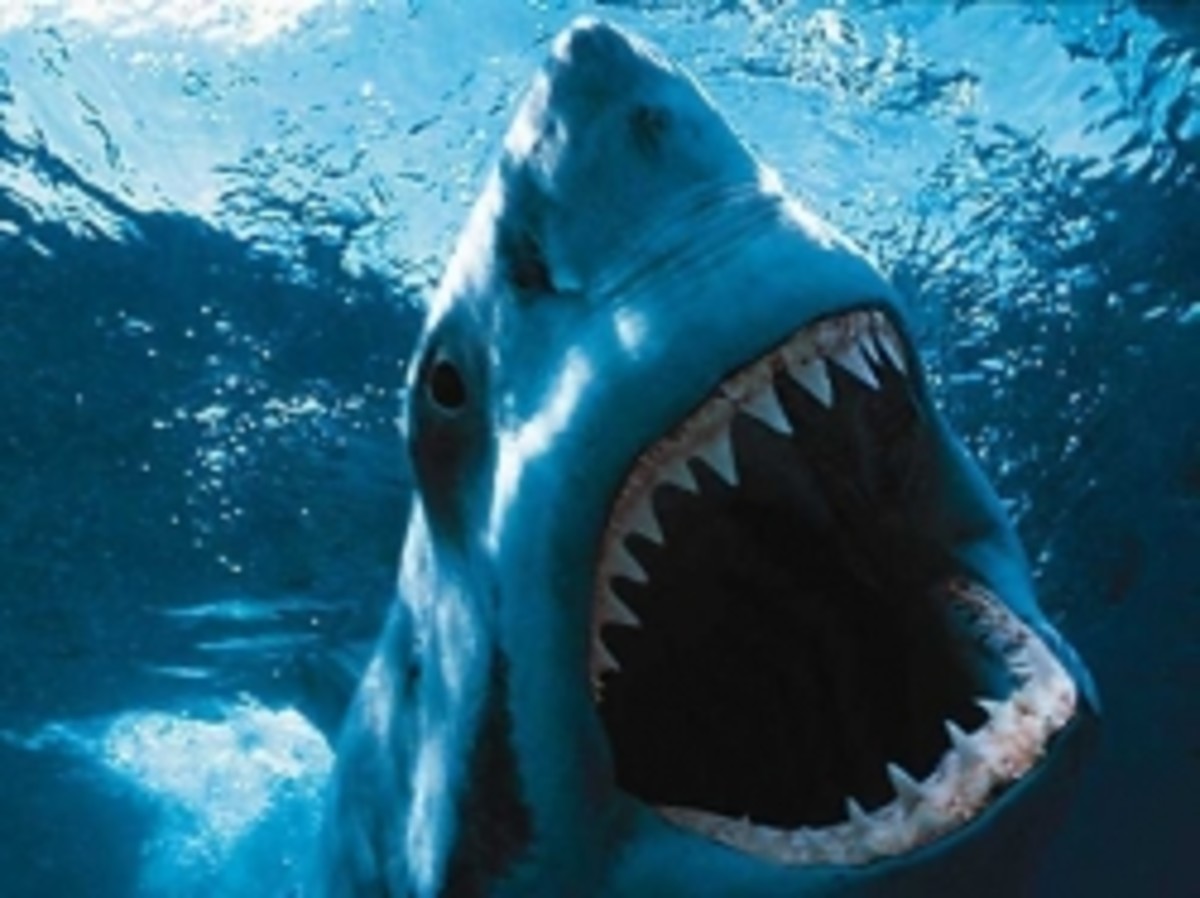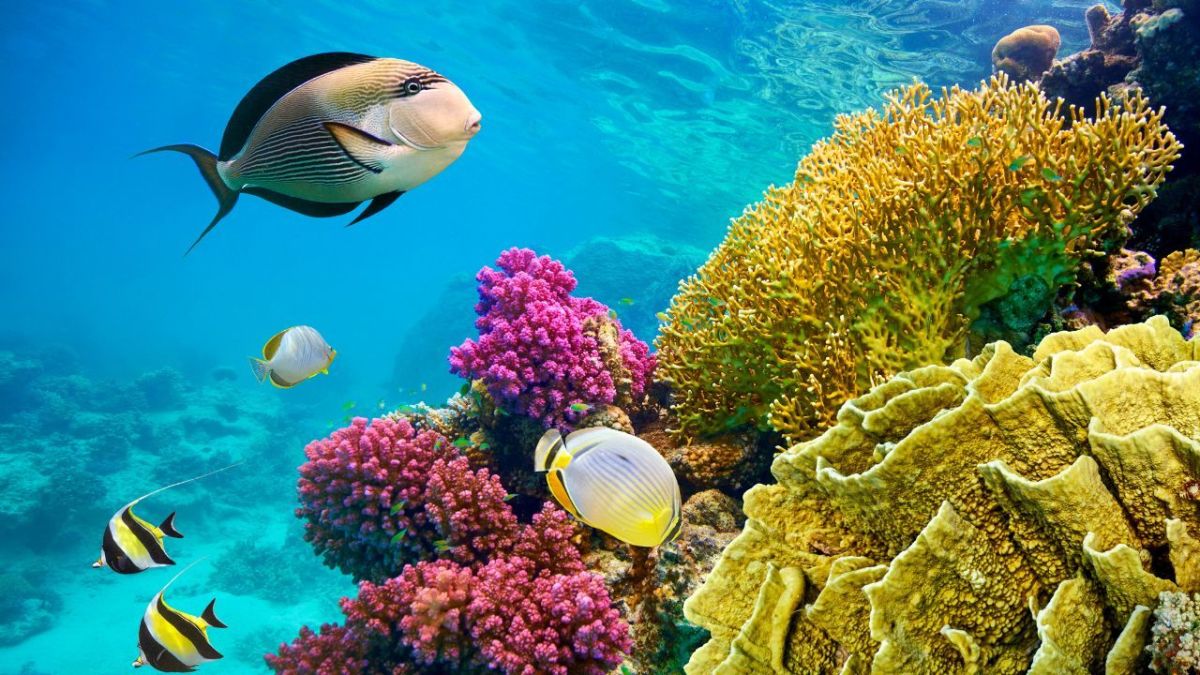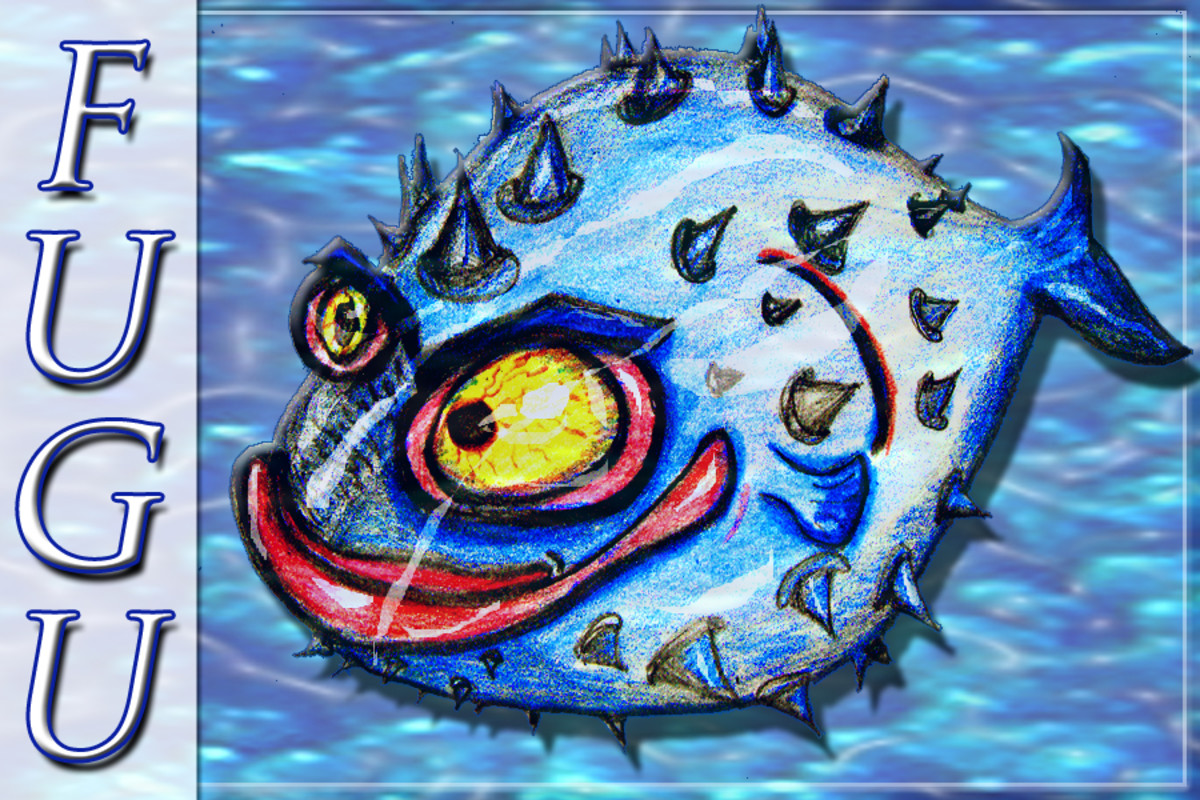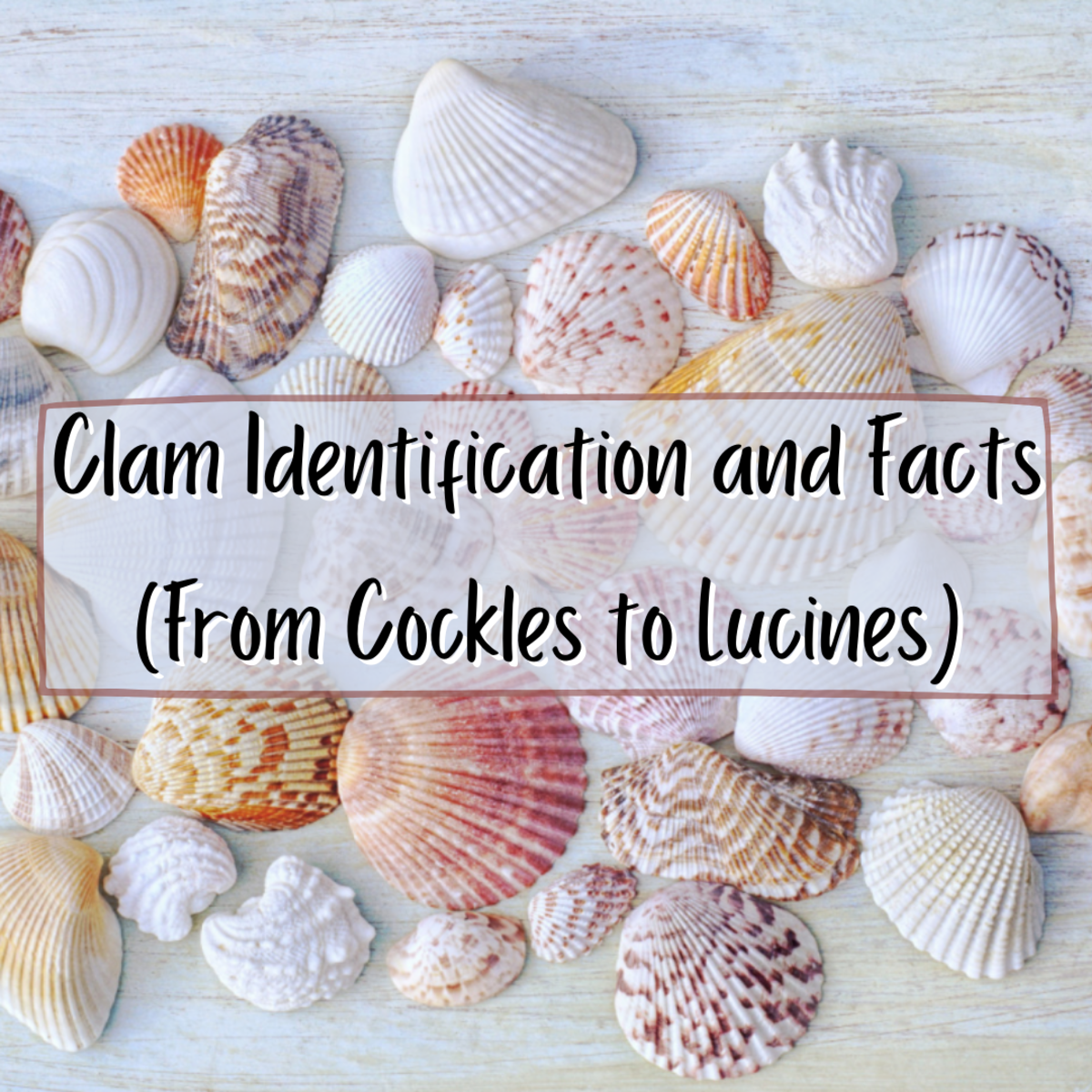Precautions against Some Dangerous Marine animals .
Being on Alert while Having Good Times.
Who doesn't like the sea and travel to beach areas ? I think we all agree that go to the beach is one of favorite activities for most of us. Diving, sun bathing, swimming, surfing, exercising, snorkeling or, at least, beach combing are some exciting activities that people always have at the beaches and seas around the world. Behind those elating moments, alertness, precautions and anticipations must also be kept just to avoid unwanted incidents to happen since seas and beaches are also places where some dangerous organism live. This hub tries to compile some dangerous and poisonous creatures which live in the sea and at the beach around the world. Knowing their physical appearances and biological information of those creatures are very important so that we know what to do regarding the precautions against those animals and how to treat effects caused by them.
Some Kinds of Fish may Cause Poisoning.
There are some fish that have poisonous flesh so that they need careful preparation before being consumed. This group includes :
Puffer/blow/swell fish (family Tetraodontidae)
Trigger fish (Balistoides viridescens)
Barracuda (Sphyraena barracuda)
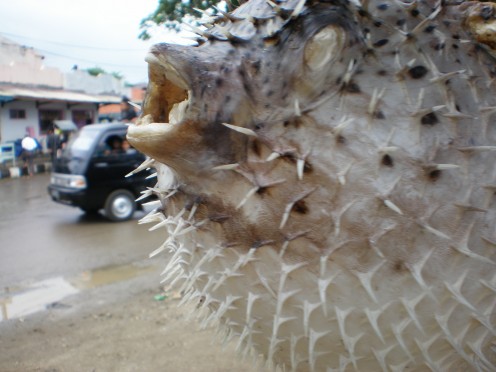
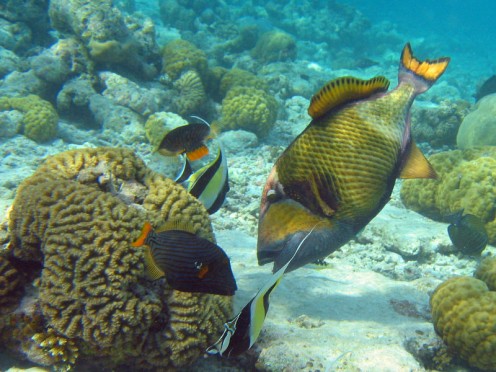
Pufferfish :
Pufferfish belong to Tetraodontidae family. This fish look just like other fish when in normal situation but when they are threatened their body swell like a balloon. We can identify one conspicuous physical appearance of this fish that they have short spines around their body. Puffer fish live in almost all seas in the world including in some rivers in Southeast Asia and Africa. People in some countries make delicacies out of puffer fish meat such as fugu (in Japan) and bok (in Kore) although they have to prepare it with extra care.
Pufferfish produces deadly toxin called Tetrodotoxin, this deadly toxin is produced by a gland and distributed to some body organs. Tetrodotoxin in puffer fish is mostly found in liver, blood, gonads, spines and skin.
Precautions :
If you want to consume puffer fish make sure that they're prepared by licensed chefs. In the case there's no certainty in safe preparation you'd better stay away from them considering that antidote for puffer's poisoning is not known yet.
Triggerfish (Balistoides family) :
These fish are good looking with combination of bright colors on their body and mostly live in tropical seas. Inspite of their attractive looks, we shouldn't catch these fish for consumption because of poison contained in their flesh.
Barracuda (Sphyraena family) :
Besides being known as ferocious fish and predator in the food chains, barracuda which live near coral reef areas, also known for poison in their flesh called Ciguetera and may cause fatal effect.
Precautions :
- Get local information whether these fish are caught from coral reef areas or from open seas. Barracuda caught from open seas are not likely to be toxic.
- Glut the fish carefully, don't eat head, internal organs, and roe.
-Don't eat meals out of barracuda flesh repeatedly since it may cause ceguetera toxin to accumulate in your body.
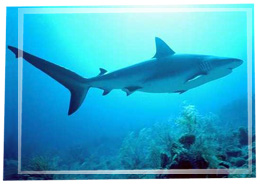
Sea Animals Which are Dangerous to Contact or Touch.
S h a r k s :
Sharks have been very notorious for their aggressive and ferocious characterics and have caused a lot of human casualties. There are certain areas in the sea known for shark infested waters, warning signs are normally posted at beaches of those areas to alert visitors. Besides their habitat in open seas, some favorite locations for sharks including estuaries of rivers or creeks.
Precautions :
- Pay attention to shark warning posts at beach areas before you decide to swim. Give up your plan if you find one.
- Do not swim or enter waters :
- At estuary of a river/a creek, this is a sharks' feeding area.
- At dawn or dusk. Sharks are usually more active and have meals at those times.
- In muddy water or after a heavy rain. Bull sharks are more active in muddy water.
- Wearing shiny jewelry or bright-colored clothing. sharks can see contrast very well and like bright colors. Shiny jewelry resembles the fins of a fish to a shark.
- If you have an open wound. Sharks have very sensitive sense of smell so that they can detect a drop of blood up to per million parts of seawater.
- Swim among a school of fish, they could be sharks' meal for the day.
- Swim in a large group . Flock with other swimmers is better than swimming alone since it will scare sharks.
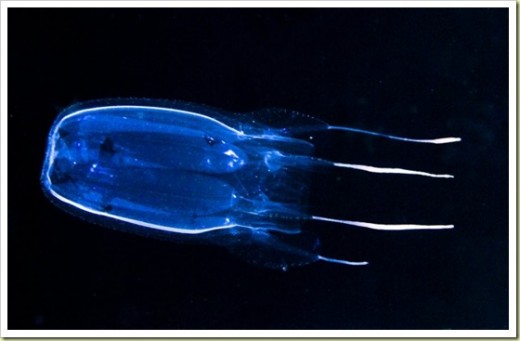
Jellyfish :
There are two kinds of jellyfish known for their deadly toxins : Box jellyfish (chironex fleckeri) and Irukanji jellyfish (Carukia barnesi), tiny jellyfish.
Box jellyfish are transparent and have pale blue color that make them almost invisible in sea water, because of this reason many swimmers do not realize they have been stung by box jellyfish and finally know it after they feel the effects. This creature lives in the ocean waters throughout Asia and Australia.Toxins of box jellyfish cause shock and heart failure and may lead to death or drowning.
Precautions and treatment :
- The most important thing to do when someone gets stung by those jellyfish is inactivate the remaining stinging cells (nematocysts), this must be done by pouring normal vinegar over the tentacles (soak for at least 30 seconds). By removing the tentacles this way you can stop the stinging cells from releasing venom.The patient should be transported to the hospital/medical center for further treatment.
- In mild cases the pains can be reduced with ice, painkillers, and antihistamins.
- If there is no immediate medical assistance available, Pressure Immobilization Bandage* can be applied (Outback Australia Travel Guide).
-Box jellyfish are more active when the weather is warm and the water is calm, so be vigilant at those moments.
- Wear full body pantyhose, full length swimsuits, or full length lycra when swimming.
- Do not touch any jellyfish, especially its long tentacles, even those washed up on the beach and apparently dead.
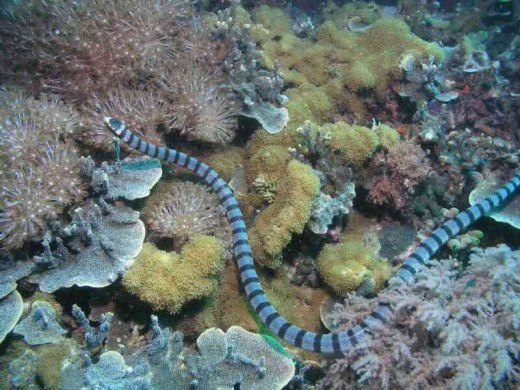
Sea Snake :
Sea snake is actually seldom in contact with human since they live in sea environment. No need to fear sea snakes when swimming at the beach or in the sea since sea snakes rarely attack human. The cases of sea snake bites happen when fisherman tried to rid the snake from their fishing net. Sea snake is considered one of the most venomous animals on earth. They live in warm coastal waters from Indian ocean to the Pacific. This water snake has paddle-like tail or compressed lateral body that makes it look like an eel. Sea snakes do not have gills so that they must come to the surface to breathe.
Early symptoms of sea snake bites include headache, thick-feeling tongue, thirst, sweating and vomiting.
Precautions :
-Do not pick or try to catch any snake in sea waters or beaches.
- Don't pick freshly killed snake without cutting through its head first. Dead snake can deliver a bite when its nervous system is still active.
- Do not put your hand into crevices in the rocks as they may be dwelling places of snakes.
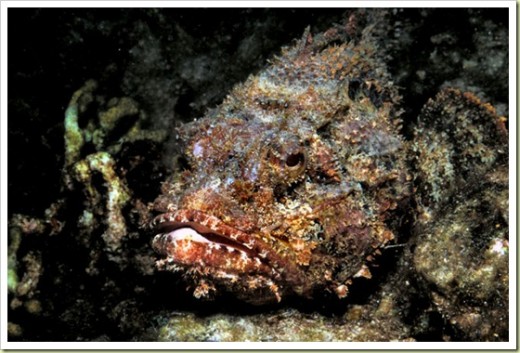
Stonefish :
Stonefish lives in all around the world especially in warm waters. This fish has specialty in camouflage which enables it to stay in disguise resembles a sea rock or coral before attacking its prey that swim nearby. Because of its unnoticeable feature, swimmers may step on it and stung by one of its 13 spines from where the venom is released. The venom will cause pain, swell, shock, and may end in death if there is no medical treatment.
Precaution :
- The fish disguising ability make it camouflaged among real rocks, so the most important thing to do for your precaution is wear some kind of sandals or shoes when at sea or beach.
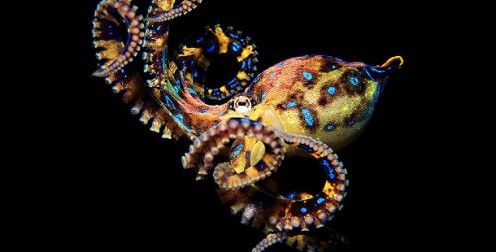
Blue-ringed Octopus (Hapalochlaena sp) :
Blue-ringed octopus is the most dangerous kind among Ochtopodidae family because of the poison contained in its saliva. This octopus lives in waters of Australia around Great Barrier Reef with body size of 10-20 cm (4-8") in diameter. This animal can be identified from the white/ grayish overall color and blue rings on its body and often found near shoreline, shallow, shandy areas or rocky pools.
Precautions and treatments:
- Do not touch, poke, play or stand on any kind of blobby animals. Contact with Jellyfish or blue-ringed octopus won't do you any good, and better stay away from them. Some data says blue-ringed octopus also releases venom into the water surrounding it.
- If a bite has happened, reassure the victim and ask him to stay still. Being panicked and restless will only push the venom to reach vital organs faster.
-Quickly wrap above and below the bite and splint it using Pressure Immobilization Bandage* technique.
- Do not drink alcohol, or take any medicine or food.
- Take the victim to medical facilities immediately.
*The Technique of Pressure Immobilization Bandage.
The technique of Pressure Immobilization Bandage was developed in the 1970s
by Professor Struan Sutherland. the purpose of this technique is is to retard the movement
of venom from the bite site into the circulation. The technique is applied in emergency situation until medical care can be given to the patient. It is currently recommended for most life threatening
venomous bites and stings in Australia including :
- all species of Australian snakes, including sea snakes
- funnel web spiders
- bee, wasp and ant stings in allergic individuals
- blue ringed octopus
-
cone shell stings. (Queensland Government).






